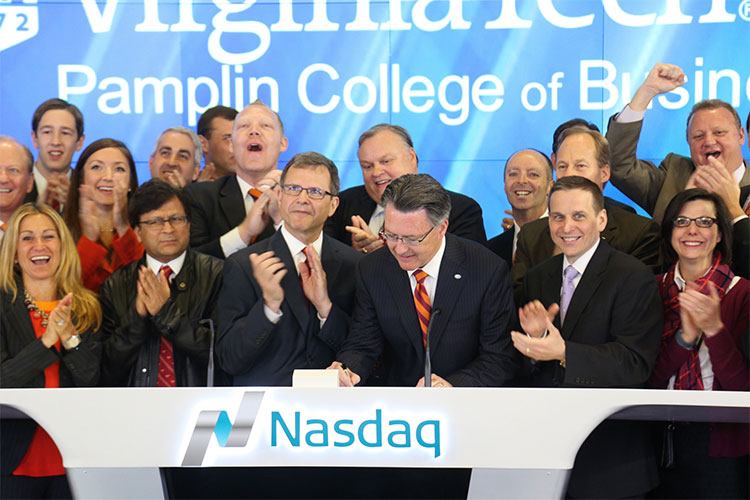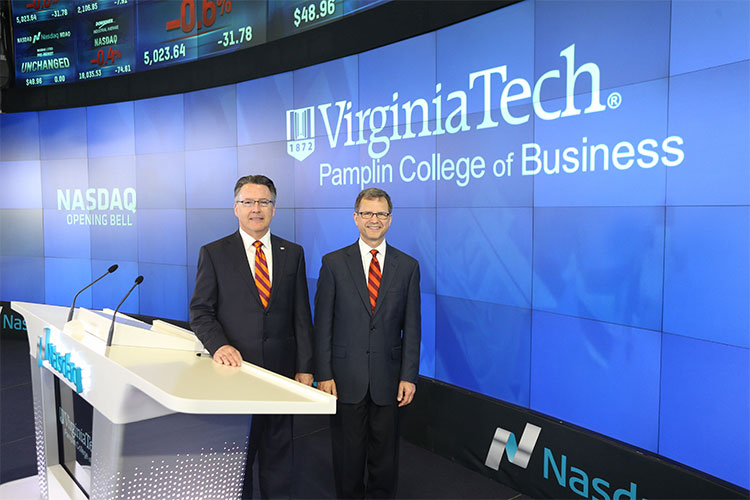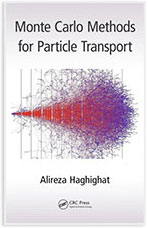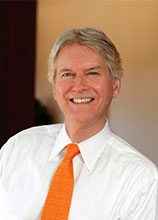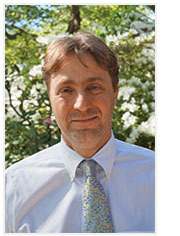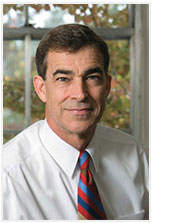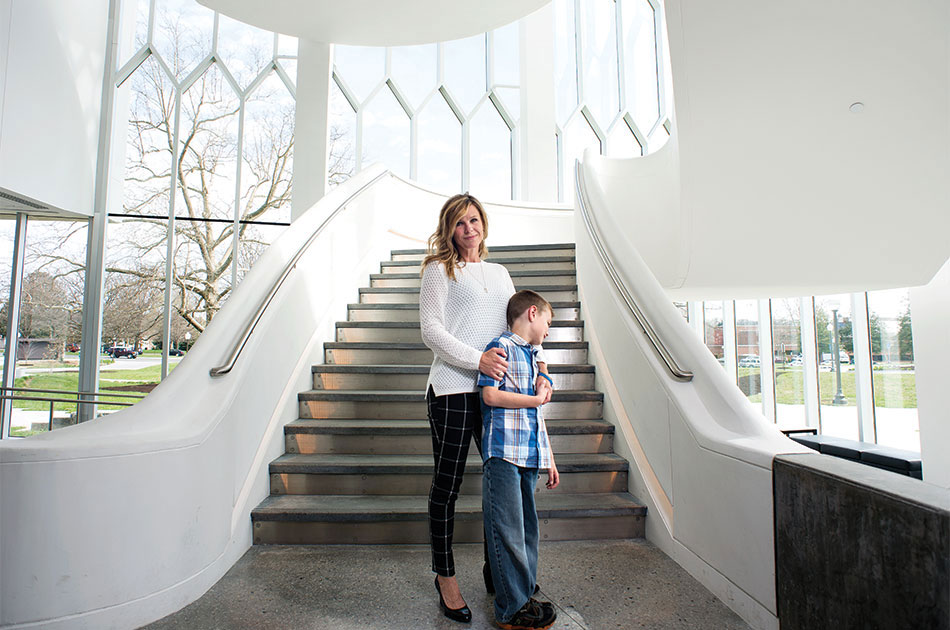
Assistant Professor Amy Azano helped organize an autism-friendly children's music concert in April at the Moss Arts Center. Designed for children like her son, William, the concert featured softened acoustics and lighting and an instrument "petting zoo" for children. About 1 in 42 boys and 1 in 189 girls have been identified with autism spectrum disorder, according to the Centers for Disease Control and Prevention. Photo by Logan Wallace.
Inspiration for her professional work is something Amy Azano comes by naturally.
Her son, William, 8, has autism. Prior to countless therapy sessions for speech and sensory issues, the boy communicated by crying and screaming. Because of his sensory issues, Azano would wait for him to fall asleep and then don a headlamp in order to cut his toenails. Today, though, William is a happy and friendly "chatterbox," Azano said.
"You have to relearn parenting," said Azano, who also has a 12-year-old daughter. "You have to relearn patience. You have to relearn unconditionally loving someone."
An assistant professor of adolescent literacy in the School of Education and an affiliated faculty member with the Virginia Tech Center for Autism Research, Azano launched SAFE—Supporting Autism Friendly Events—in the New River Valley. Because autism often involves sensory challenges and related anxieties, a SAFE Santa event allowed children and families to enter the New River Valley Mall early, before the crowds. "I had a handful of parents who had tears in their eyes tell me, 'This is the closest we've ever been to Santa,'" Azano said.
Azano focuses on gifted and autistic students and their families, educators, and care-providers in rural communities. One grant-funded effort seeks to identify gifted and talented students in rural Virginia and develop programs to serve them.
The former high school teacher recognizes that William has given her an opportunity to help others. "For me, this is deeply meaningful scholarship and outreach work. I love that Virginia Tech is a land-grant institution. The connection to the local community is a real thing."
Moment
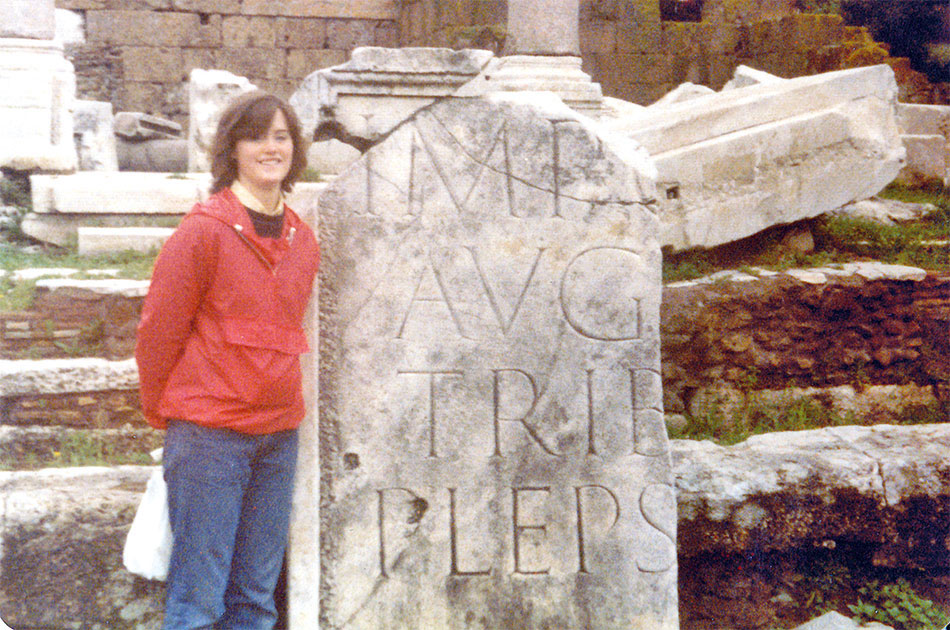
Trudy Harrington Becker in the Roman Forum, 1982
When in Rome
As a member of only the second class of women to matriculate at Boston Latin School—founded in 1635 as the country's first public school—and only the fourth class of women at the College of the Holy Cross, long renowned for its classics department, Trudy Harrington Becker was destined to be a classicist.
During her junior year at Holy Cross, Becker, who double-majored in classics and history, was accepted into a highly selective, intensive program at the Intercollegiate Center for Classical Studies in Rome. "I was really moved by being in [Rome]," said Becker. "I needed to see that language, that prose, that poetry, in a space in time."
A 2015 William E. Wine Award winner, Becker, senior instructor and associate chair in the Department of History, has been at Tech nearly 30 years, along with her husband, Andrew Becker, associate professor of Latin and ancient Greek languages, literatures, and cultures.
Since 1997, the Beckers, both in the College of Liberal Arts and Human Sciences' Classical Studies Program, have taken Tech students to the Steger Center for International Scholarship in Riva San Vitale, Switzerland, and to Rome for summer study-abroad programs. In 2014, the couple, who have always traveled with their twin sons and daughter, shared the university's Alumni Award for Excellence in International Education.
"Rome is my place. I know this place. I feel this place. And it's also because I'm with my husband; it's our place," Becker said. "When we arrive in Rome, I can breathe better."
Glow, little millipede, glimmer, glimmer
Video by J. Scott Parker | Visual and Broadcast Communications
Bioluminescence—the ability of living things to glow—may have evolved as a byproduct of a metabolic process to aid survival in harsh climates, at least in one millipede.
Assistant Professor of Entomology Paul Marek, a diplopodologist in the College of Agriculture and Life Sciences who oversees the only functioning millipede lab in the U.S., worked with his team to sequence the DNA of the Xystocheir bistipita, which Marek rediscovered seven years ago in the foothills of California's Sierra Nevada Mountains.
Unseen since 1967, the species was not thought to belong to the genus of millipedes that glow, but the DNA revealed otherwise. Marek changed its name to Motyxia bistipita; reconstructed an evolutionary tree with every species in the genus and its closest nonglowing relatives; and tested their relationships to M. bistipita, mapping a gradation of their glow from faint to bright.
After placing individual millipedes in a light tube in a darkroom, the team calculated each bug's toxicity by measuring the volume of cyanide glands lining its sides. When the results indicated that millipedes with larger cyanide glands are brighter, a functional link between luminescent intensity and toxicity was determined. Put plainly, bugs at higher elevations with more predators glow more brightly than those at lower elevations with fewer predators.
"We showed that bioluminescence, a trait typically used as a warning pattern, evolved gradually and for a different purpose," said Marek.
Flying lessons
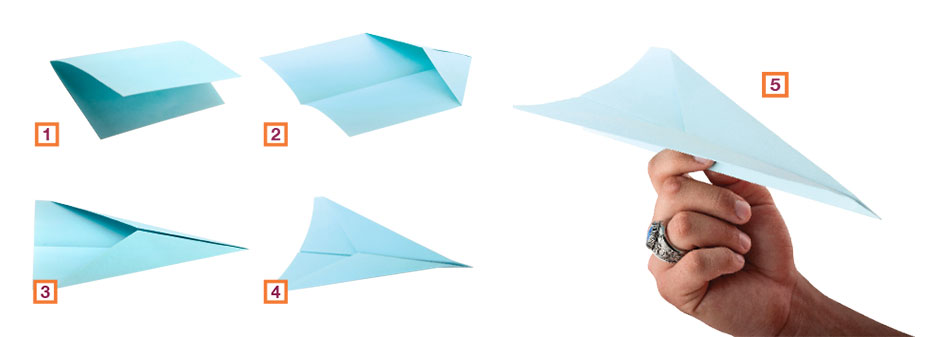
At a Red Bull Paper Wings qualifying contest at the University of Virginia in March, Robby Boys (industrial and systems engineering '15) took second place on the East Coast, one place away from winning a trip to Austria for the world finals. But he'll reach Europe anyway: His role on a student team that built an off-road rally car led to a sales job with a global supplier of washing equipment for quarries and mines. This summer, Boys begins his training in Ireland.
Boys used the basic design below to float a plane for more than four seconds and win the hang-time category, one of three in the contest (along with distance, which he won with an 80-foot toss, and aerobatics). For the sake of weight distribution, he said, ensure that each fold is symmetrical.
(1) Fold the paper in half vertically. (2) Take the two top corners and fold to center. (3) Fold each side of the corners of the paper to center. (4) Re-crease the middle fold and fold down the wings. (5) Hold in the middle of the plane and toss.
By Kenedy McGrath, a rising senior communication major. Photos by Shelby Lum.
Ringing the Nasdaq opening bell
© Copyright 2015, The NASDAQ OMX Group Inc.
At 9:30 a.m. on April 30, Virginia Tech President Timothy D. Sands and Pamplin College of Business Dean Robert Sumichrast rang the opening bell at the Nasdaq MarketSite in New York City's Times Square.
Sands and Sumichrast were accompanied by Virginia Tech alumni in the New York City area and other representatives from Tech and Pamplin, including the college's Apex Systems Center for Innovation and Entrepreneurship, which was launched in 2014 to support entrepreneurship and innovation programs across the university.
Tech among the world's elite
Ranking No. 355 overall, Virginia Tech is positioned near the top 10 percent in the annual QS World University Rankings of more than 3,500 universities around the globe.
Specifically, Tech appears in the top 200 in 18 of the 36 individual subjects evaluated. Ranked in the top 50 are the Department of Mechanical Engineering at 45th—its second consecutive year in the top 50—and the Virginia-Maryland College of Veterinary Medicine at 49th in veterinary medicine, one of six new subjects added to the rankings for 2015.
Among the nearly 11,000 programs evaluated, Tech programs ranking in the top 100 are civil engineering, electrical engineering, and agriculture and forestry; in the top 150 are statistics and operational research, environmental sciences, earth and marine sciences, geography, and materials science; and in the top 200 are mathematics, physics and astronomy, chemical engineering, chemistry, and education.
The rankings, which aim to provide a resource for prospective students to identify the most prestigious institutions for the study of particular subjects, are based on survey responses from faculty throughout the world who evaluate only those universities in their region. This year, more than 93,000 faculty members participated. More information is available at www.topuniversities.com/subject-rankings/2015.
Makeover: McBryde Hall auditorium
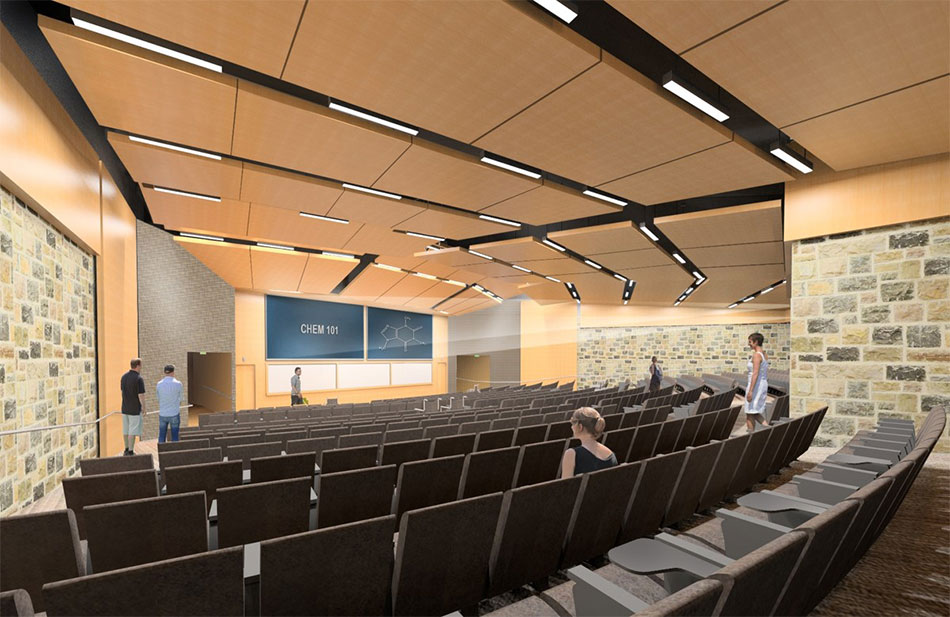
If you attended Virginia Tech during the past 40 years or so, chances are you set foot in McBryde 100, one of the most heavily used instructional spaces on campus.
Because the 540-seat auditorium has begun showing the wear and tear of accommodating some 2,300 people each weekday, renovations to improve accessibility, technology, seating, and acoustics are taking place this summer.
According to Chris Kiwus, associate vice president and chief facilities officer, the project is one of many scheduled this summer to improve teaching and learning facilities, academic and residential buildings, outside spaces, and thoroughfares around campus.
Virginia Tech Magazine App for iOS and Android
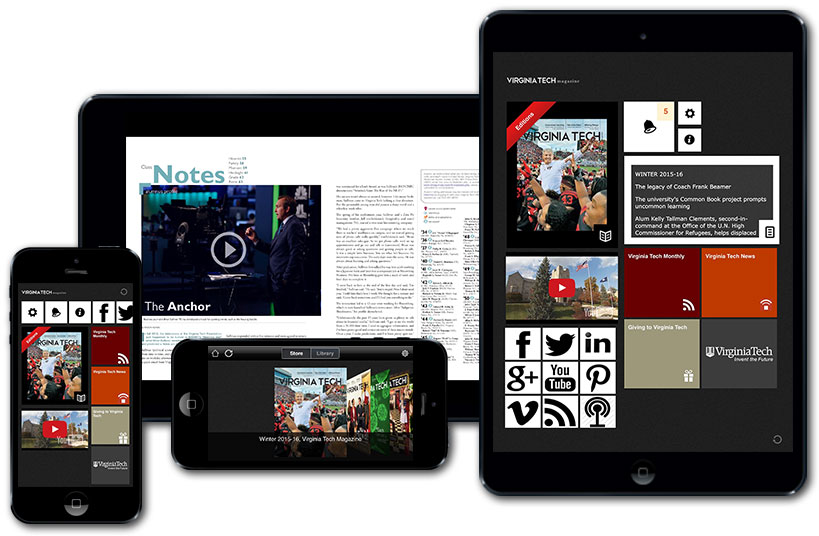
"Intuition, compassion, creativity—these are things we do better than machines. These are things you, having sharpened those innate skills here in Blacksburg, can put to use in service of a better day for us all." Eric Schmidt, Google's CEO from 2001 to 2011 and now the company's executive chairman, delivered the university's commencement address in May.
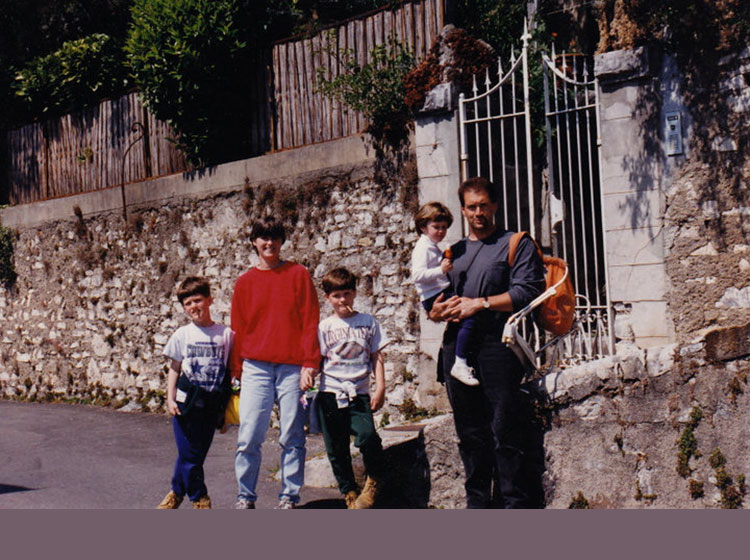 Trudy and Andrew Becker with their children in Riva San Vitale, Switzerland, 1997
Trudy and Andrew Becker with their children in Riva San Vitale, Switzerland, 1997
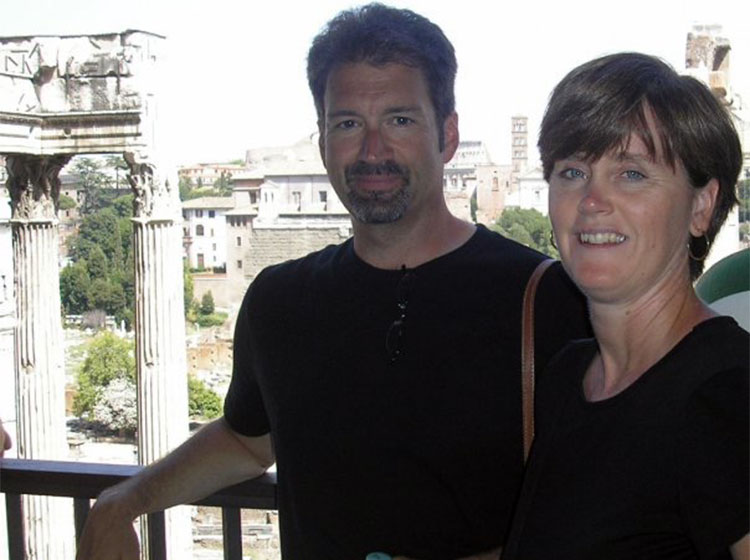 Trudy and Andrew Becker in the Roman Forum, c. 2009
Trudy and Andrew Becker in the Roman Forum, c. 2009
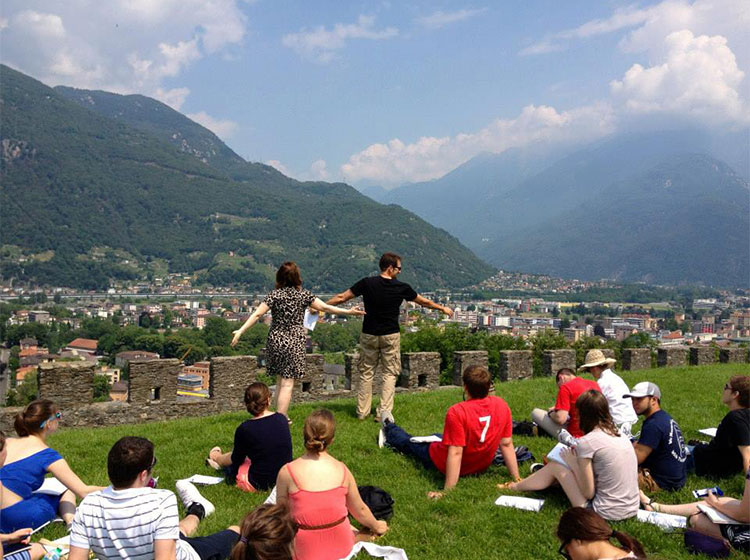 Trudy and Andrew Becker engage in some pedagogical dancing in Bellinzona, Switzerland.
Trudy and Andrew Becker engage in some pedagogical dancing in Bellinzona, Switzerland.
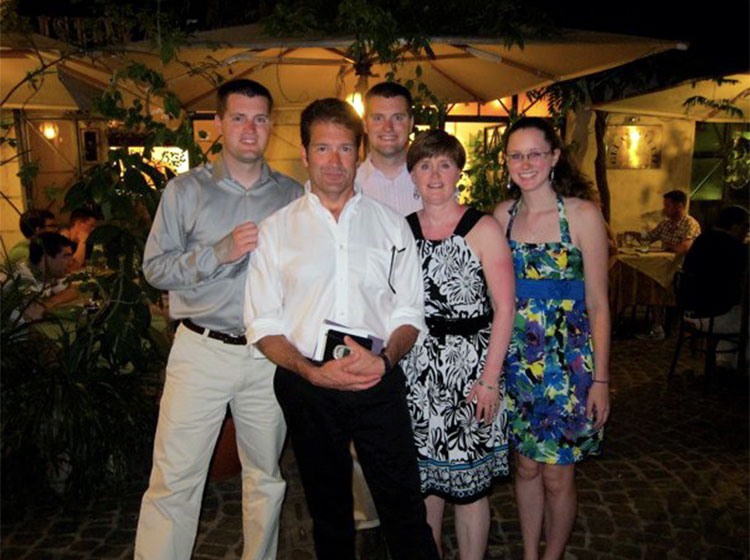 Trudy and Andrew Becker with their children in Rome, 2011
Trudy and Andrew Becker with their children in Rome, 2011
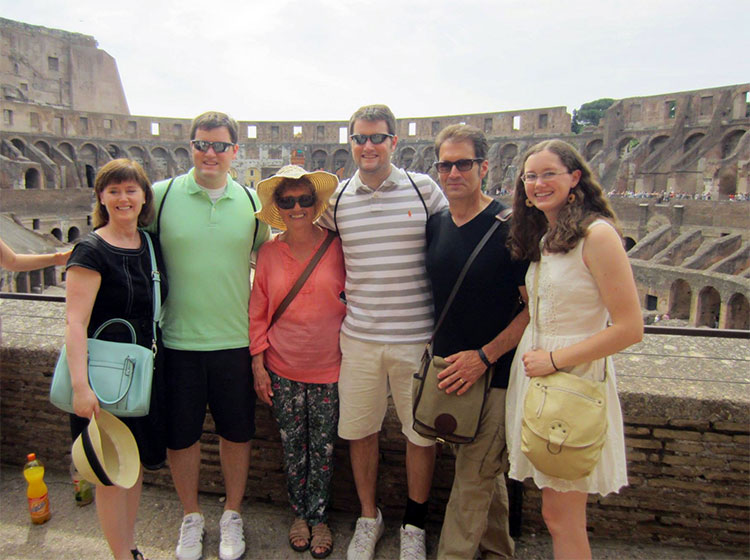 Trudy and Andrew Becker with their children in Rome's Colosseum, 2013
Trudy and Andrew Becker with their children in Rome's Colosseum, 2013
